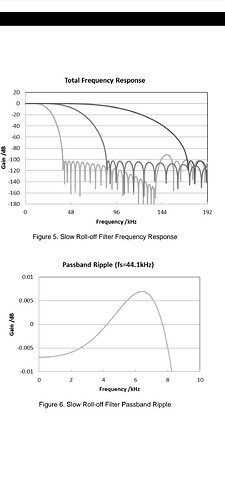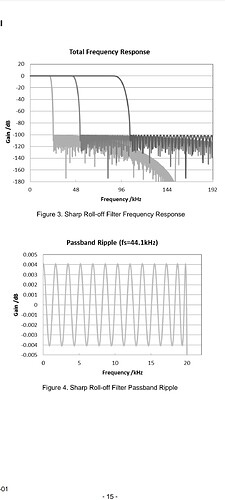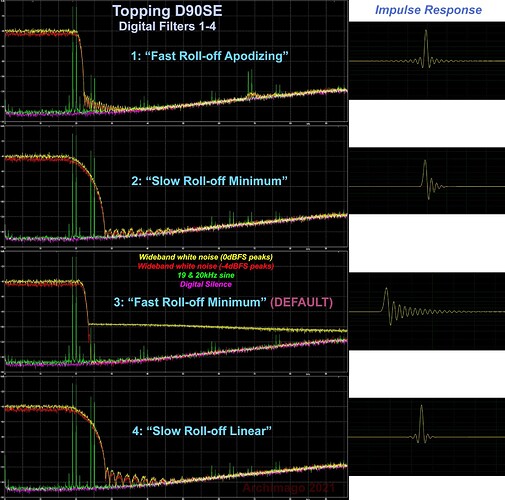Thats correct. I tested that myself using the CXN V2 connected to a DAC via SPDIF. Signal will be forwarded bit perfect but Roon still shows that it is upsampling… idk but I think thats a bug worth fixing even though I doubt that it will be possible. Were the hell should Roon know which output on the CXN V2 you are using. Best thing to do would be to just dont display the upsampling in Roon at all…
Absolutely. I would prefer to have the option of turning it on/off as well.
Not really, my SMSL M300MkII i.e. converts any resolution as it’s sent to it without automatic upsampling, all the way up to 768kHz/32bit or DSD512.
It may be unusual, but it is clearly spelled out up front, and most users are happy with it. CA claims it is a feature, not a bug. In streaming low res internet radio stations, the upres seems - I emphasize “seems” - to improve sound quality. I am using the v2 in a secondary system. Works great for me played through a CAX61 amp to SVS Ultras and sub.
I understand your objection, but the only way to avoid the upres is to purchase a different streamer.
I am fine with how it works I was just reporting my findings. If I want to use it as a DAC I simply connect via USB to my RoPieeeXL…
The AK4497EQ is precisely one of those “current integrated HiFi audio DAC-chips” that use oversampling (you can call this also upsampling) I meant. I also don’t know how the “variety of digital filtering modes and sound color modes” should work without the upsampling as they need the upsampling process as an occasion to be applied and many of them also need the extended frequency response that results from the upsampling to work correctly (there is no “soft roll off” when there isn’t an extended range to roll off into).
So these chip-DACs are all oversampling, just no one bothers to tell that to customers. And of course there is no way to disable that integrated upsampling as it is part of how these DACs work and why they sound as good as they do. 
Can’t follow you there, since differing digital filter slopes can be applied without the need for over/up sampling at all, see just these two screenshots from quoted data sheet as an example at three differing rates each
Would you care to enlighten me?
The filtering without oversampling happens near the Nyquist frequency using a brick-wall filter. There is no need to continue the frequency graph after the Nyquist frequency as no acurate data is expected there (the reason why the filter gets applied). Even when done anyway, the frequency graph would stop at the sampling frequency because that’s it; no more data above it. How can it be that the frequency graph for 44.1 kHz for example extends far beyond if not because of oversampling/upsampling being used that allows for it?
How much oversampling/upsampling can happen is also listed in the quoted datasheet:

For 44.1 kHz minimum 256 times: 11.2896 MHz
Of course there’s no more data beyond the sampling frequency!
Caveat: I’m not at all firm in the math behind it all, but…
It’s all about the analog output of the whole process, and when measuring the analog output after applying a digital filter with white noise samples as in the data sheet, what you get beyond the Nyquist frequency is aliasing products, which is only mirrored signal from below Nyquist and of course not originally encoded or ‘oversampled’ signal.
That’s easier to see here (taken from Archimago) as the two spikes at various amplitudes to the right of the filter slope in comparison to the real two test sinus frequencies to the left of it:
Why does one do that then, you may ask.
Well, because there’s not just the frequency but also the time domain behavior at play, and that can be influenced in regards to ringing behavior, but at the cost of passband errors - and anyone may choose what they think sounds better to them…
Loads of DACs oversample internally it’s why people on insist on upsampling to the DAC in Roon or HQ.player so the DAC doesnt have to and does less work which they feel sound better. The CXN just makes the fact it oversamples upfront for all to know and it shows in Roons signal path. When its not using the DAC it doesn’t need to oversample as it’s a pass through avoiding their DAC. Nothing odd about what it’s doing at all.
Exactly. The data we are interested in, is below the Nyquist frequency and the “bad” bunch we don’t want is between the Nyquist frequency and the sampling frequency. There is no data, good or bad (music or artifacts), above the sampling frequency as the system is no longer active there. As for low sampling frequencies (the standard 44.1 kHz) the bad data is still very close to the good data, oversampling is used as a way to move this bad data further away from the good data. Now that the input data gets oversampled, there is also the chance to choose other filters than a brick-wall. Again, there is no “soft roll off” when there isn’t an extended usable (below the Nyquist frequency) frequency range to roll off into. The ability to chose between different filters wouldn’t exist without oversampling.
How many times the input data frequency can be oversampled by the DAC in your SMSL M300 MkII is listed in the table I posted in my last post (Note: An option to not oversample is not given there).
This topic was automatically closed 36 hours after the last reply. New replies are no longer allowed.


